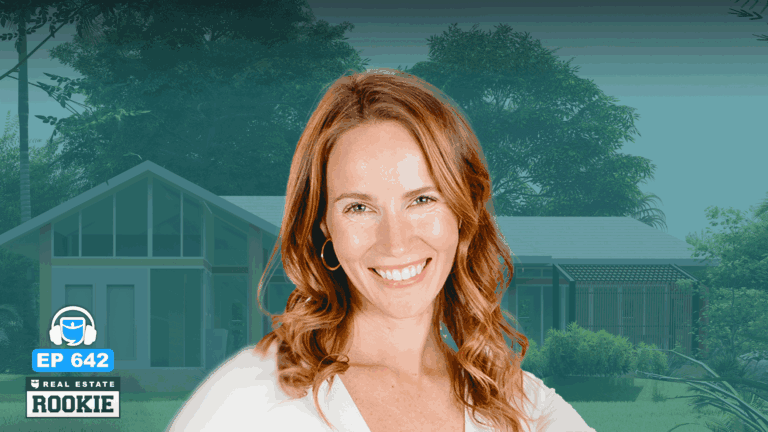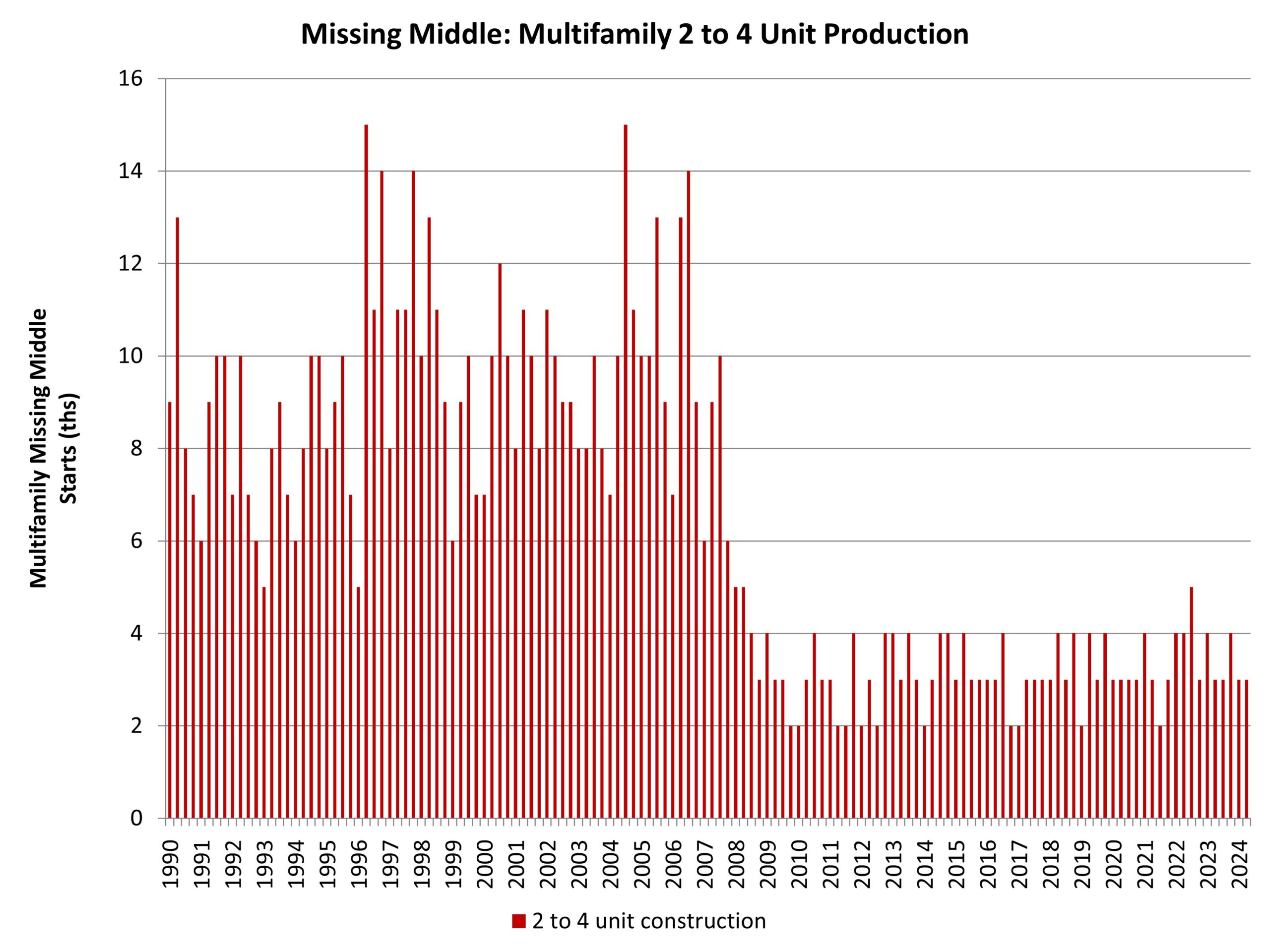If you live in a market where home prices are hovering above $500,000, this is the episode for you. You’ve all told us loud and clear: real estate investing is tough when you live in an expensive market. Many investors feel like they can’t buy a single property, let alone scale to financial freedom. We hear you, and today we’re giving you multiple strategies that work in high-priced markets.
We’re not only showing you which investments work, but sharing the cash flow “superchargers” that routinely make rental property investors even more money in markets that many assume won’t work.
We have different strategies for every investor: value-add, high-cash flow, low money down, and how to combine them to make the most money possible on your next investment. Plus, Dave shares the hybrid approach he’s using to invest in his pricey market (Seattle) and build a cash-flowing portfolio out of state.
Dave:
You want to invest in real estate, you’ve done the research, you’re bought in, but you live in an expensive market and no deals seem to make sense today. I’m here to tell you it is possible to invest in real estate even if you live in Denver, San Francisco, or one of these other cities where even buying one house to live in out of reach. I get it. I live in an expensive market myself, and it can be frustrating to hear about people rapidly building portfolios in places where houses only cost a hundred thousand dollars. So today I’m going to explain the strategies you can use to invest successfully even when the properties around you feel unaffordable.
Hey everyone, welcome to the BiggerPockets podcast. I’m Dave Meyer. Thank you all so much for being here. Everything is expensive right now. Coffee, steaks, cars, and yes, definitely houses and I think everyone is feeling that strain, but for my friends who live on the coasts or in expensive cities, things feel even more out of reach. 600 grand for a single family residence, a million dollars for a duplex. It can be a little bit crazy making, but fear not. There are great ways to invest even if you live in an expensive market. And in today’s episode we’re going to cover how you can build a portfolio and reach financial freedom no matter where you live. We’re going to cover different strategies that work in expensive markets, whether or not you should consider investing out of state, and I’ll even share real numbers and examples so you can decide which options are best for you.
Let’s do it. So first up, let’s just define what an expensive market is because that is completely relative, but for the purposes of this episode, I’m going to just say it’s anything above $500,000 for the median priced home that’s 15, 20% above national average right now, which is somewhere near 420, 400 $30,000 depending on who you ask. Now, I think instinctually, everyone knows that’s a lot of money that feels expensive, but just want to call out the very real measurable challenges that there are investing in real estate when you live in an expensive market. And for me, there are primarily two of these. The first is affordability, right? Like how much capital you need to actually go out and buy just a single property is hard, but even if you can do that, it does lead to problem scaling just because real estate is capital intensive in the first place.
But if you’re in a place that is very expensive, you’re going to need a lot of money upfront for down payments, for renovations, for closing costs, for cash reserves. So investing in an expensive market can lead to challenges when trying to scale up your portfolio. That’s the first one. The second challenge in expensive markets is finding cashflow because these markets tend to appreciate in terms of property price, but proportionally rents don’t really keep up with how expensive properties get. So you get in these situations where it’s more and more expensive to buy a home, but the rents don’t keep up and that makes the cashflow potential less in a lot of these markets. So all in there is nothing wrong with investing in expensive markets. People make tons of money investing in these expensive places. Think about being in, I mean pretty much any city in California or Seattle or Denver or Austin or Boston in recent decades, they have largely crushed it.
So the question is with prices high and with mortgage rates high, how do you get in? You invest in these expensive markets to take advantage of the benefits that are there to mitigate the risks that exist in the current market and to offset the challenges that come with scaling and with cashflow generally. There are two schools of thought here. One is you can find something that works locally and actually just figure out a way to make it work in an expensive market or you could invest long distance and just choose another market. I’m going to talk about both, but since we talk a lot about investing out of state in long distance on this show, I’m going to focus less on that and talk more today about the strategies that work in expensive markets. So the first category of things that work in expensive market is value add investing.
Some people call this sweat equity or forced depreciation, but they’re all the same thing. The general idea is you buy a property that’s not up to its highest and best use, it’s something that’s a little bit run down, it’s dated, it needs some work, and then you do the work to bring it up to modern standards and make it really nice. And in doing so, you can generate big chunks of equity that can really help fuel your investing portfolio. It can build a lot of capital that you can reinvest into other deals or you could just leave it in those existing deals if you want to do the bur. So there are two different strategies within value add that can work in expensive markets. The first is flipping. You’ve probably heard of this, but basically you buy a house, you fix it up and you sell it.
And although flipping does come with risk, it does also come with huge potentials for return. It is not unheard of for flippers to get 30, 40, 50% cash on cash returns, just total returns on a flip in six months. If you annualize that sometimes you could double your money in just a year, and this definitely works in expensive markets. You see this in la, you see this in Boston and New York. This is definitely a strategy that works, but it’s not for everyone because flipping is time consuming. It can be stressful and there’s definitely risk. So if you’re thinking about flipping, I think you should ask yourself a couple of questions about whether this is right for you. First, do you have any experience with renovations? It doesn’t need to be a crazy gut job renovation, although those do have higher returns. Are you good at managing projects or do you have a good network of contractors out there?
Do you have the temperament for it? Because I just literally just an hour ago listed my first flip for sale and I can tell you things are going to go wrong. You need to have the right temperament where you just can kind of go with the flow, understand that even though you need a plan, it’s probably not going to go exactly as you expect it to and you’re going to have to be willing to work with it. So you need to understand are you good at this? Do you have the temperament and are you willing to take the risk? Because even good flippers lose money sometimes. And so although you’re taking a big swing, this is just how investing works, right? The higher risk things have the higher reward, and so you can make a lot of money, but you just have to be willing to know that there are risks both in construction and in the market right now.
You do need to accept that things are taking longer to sell. You’re not going to be able to flip something, put it on the market, it’s going to sell in the first weekend. I mean maybe, but on average the time on market right now is going up 30, 45, 60 days in some places and there are significant holding costs, and so you just need to be prepared for that. But again, the opportunity to double your money is really appealing and although there are some adverse parts of the market right now that are going to impact flipping mostly like I said, days on market and longer hold periods, that’s probably number one. You also have tariffs are increasing the cost of materials in a lot of places and in some places the cost of labor as well. But you are also getting one benefit for value add investing right now, which can work particularly well in expensive markets.
There’s this thing that happens when you enter a real estate correction. I think we’re in across most of the country right now where the price of fixed up really nice stabilized assets, they might go down a little bit, but proportionally they’re not going to go down that much. Meanwhile, properties that need a lot of work are going to fall in price faster. That increases your margin potential. Now you have to balance that with increased labor costs and supply costs, time on market, all that other stuff. But there are some things that do benefit flipping in this kind of market, and I really recommend knowing your market really well because flipping is very block by block, house by house kind of thing, but it can definitely work in expensive markets. Now I know that flipping’s not for everyone, but this idea of value add investing can also work for rental property investing in the form of the, if you haven’t heard of the bur method, it stands for buy, rehab, rent, refinance, and repeat.
And basically what it is is using the benefits of a flip with a rental property, which in my opinion offsets a lot of the risk and also gives you additional benefits because think about this, what I just said was that the market is giving us cheaper properties to buy that need work. So that means that you can buy these burr properties potentially lower right now than you could in the last couple of years. And I also said that the biggest risk in flipping right now is when you go to sell it, right? It could sit on the market for a while. We could have some crazy news or mortgage rates could fluctuate and it could sit for a little bit longer than you’re hoping for, but with the Burt, you’re not necessarily selling it. So you can buy things at a pretty good discount right now, do the renovation and then refinance it and hold onto it, and maybe you sell it one day, but you have the option then to wait to sell it during a better time to sell than it might be at the time that you actually finish that renovation.
So that’s one really big benefit is that you can build equity just like flipping, but you don’t have that pressure to sell the property immediately. The second thing about a burr that can work really well in expensive markets is that burrs, sure they build equity, they get you that forced appreciation, but oftentimes they can help you increase rents, right? Because if you buy something that’s not in great shape, people aren’t going to rent that as is for a lot of money. But if you make a really great product that’s going to have demand from a lot of tenants, then you can raise rents and you can potentially generate cashflow even in expensive markets. I’ve been underwriting deals in Denver, and you can actually make the burr work for growing appreciation and generating cashflow In a market like Denver that is definitely considered an expensive market.
So this can absolutely work. I’ve talked on the show too about really liking something these days, what I’m calling the slow, which is just buying a, let’s call it a duplex with tenants, and it might not cashflow right away, but when the tenant moves out, that’s when you renovate the property. You bring up your rents then and just do that opportunistically. That takes a lot of the pressure off of you to do things quickly, which personally I like. I work full time and a lot of people do. So that takes some time pressure off, and it also means that you don’t have to invest the full amount of capital into the project right away. You can put your down payment down, you cover your closing costs, you have your cash reserves, and then maybe six months down the road you put in some money, 15 grand to renovate a unit, but you have some time to recover that capital, maybe save up some money, seek that money elsewhere, and that’s another great way to get in into an expensive market. So those are the first two strategies that I recommend. If you want to invest in expensive market, take advantage of value add opportunities that could be in the form of flipping or the bur method. When we come back from this quick break, I’m going to talk about how you can find cashflow, yes, cashflow even in expensive markets. Stay with us. This week’s bigger News is brought to you by the Fundrise Flagship Fund. Invest in private market real estate with the Fundrise flagship fund. Check out fundrise.com/pockets to learn more.
Welcome back to the BiggerPockets podcast. I’m Dave Meyer talking about how it is possible to make a profit and to invest in an expensive market. Before the break, we talked about value add investing either in flipping or a burr, but I want to turn our attention to cashflow because this is really the challenge of an affordable market. It is hard to find, but there are ways that you can do it. Like I said before, if you were to go out and just buy a regular single family home in an expensive market for 500 grand, it is very unlikely that you’re going to cashflow. In most markets, you’re going to rent that out maybe 2,500 bucks, 3000 bucks if you’re lucky, probably not going to work. But there are certain strategies, there’s two or three of them that I kind of consider as cashflow superchargers. It’s not really changing the approach.
You’re still buying a single family home or a duplex, something that you want to hold onto for a long time, but hopefully using one of the methods that I’m about to tell you, instead of generating 3000 a month in long-term rents, you can get that cashflow up to 4,000 that’s close to cashflowing or 4,500 or even more, and it can definitely work. And the three different cashflow superchargers that I consider are one, you’ve definitely heard of this, which is short-term rentals. I know everyone calls short-term rentals, a totally different strategy than long-term rentals, and in some ways it is, but to me, you’re still trying to buy something and hold onto it for a long time, and that’s really the play in the expensive market, right? Because you want to hold onto something for as long as possible to capture that appreciation when it comes.
We don’t know when that appreciation’s going to come. It could be this year, it could be next year, it could be three years from now until we see that big spike. But the real estate market works in cycles and there will be another cycle where prices go up, whether or not you rent it as a long-term rental, a short-term rental, a midterm rental or co-living, all strategies I’m about to talk about. That’s kind of up to you, right? That’s just being opportunistic about what’s going on in the market. If you can get great rents, generally I recommend long-term rentals. It’s just easier. There’s less wear and tear on the property. It’s less operational headache, but in these expensive markets, usually that doesn’t work. So you can turn to short-term rentals, which definitely has the potential for higher cashflow than long-term rentals. Now I’m saying that is potential because short-term rentals, even more than long-term rentals are very location specific.
So if you’re in LA or San Francisco where there’s a lot of tourists coming, New York, Boston, these kinds of things, people take vacations there and you can be in a great location where people are going to want to stay there and you don’t have a lot of competition from other short-term rentals. This can definitely work. I do want to caution though that short-term rentals are not magic. Over the last couple of years people have said, oh, short-term rentals generate more cashflow. Yeah, on a per night basis, that’s true. The rate you can charge for one night of a short-term rental is much higher than you can for a long-term rental, but with short-term rentals, the risk of vacancy is way, way higher. And over the last couple of years, if you look at the short-term rental market, that has definitely become true almost across the board there is just more supply of short-term rentals so you have more competition and demand for them even though it’s stagnant, it just hasn’t kept up with that more supply.
And so if you’re going to do a short-term rental, you have to really focus on competing and being the best product in your neighborhood so that you can fill that place and keep it filled. Now, a lot of people do that with a lot of success. I have a lot of investors, friends who are still able to do this, but just don’t go into short-term rentals saying, I’m doing it because I want more cashflow. You need to actually do your research and figure out if that is realistic for you in your area. That next strategy I want to talk about is pretty similar. It’s called midterm rentals. The idea here is kind of like a short-term rental, but it’s for people who stay for 30 days or more, and this has become popular with traveling nurses or corporate housing. I’ve stayed in midterm rentals myself.
When I’m moving to a new city, for example, and this is kind of a nice combination, it’s sort of a blend or a hedge between long-term and short-term rentals because getting the higher daily rate like you get for short-term rentals, but because people book them for longer periods of time, you’re mitigating your risk of a lot of vacancy. Now, if you have a vacancy with a midterm rental, it could last several months. So that is a challenge. But in markets where there is a lot of demand for midterm rentals, it can be an excellent way to generate cashflow. As an example, we were talking about buying a $500,000 home. It’s very realistic to think that you could charge four grand or 4,500 bucks for a nice furnished apartment in one of these markets and make your property cashflow. Those are two good examples of cashflow accelerators, short-term rentals and midterm rentals.
The other one I want to bring up, it’s not new, but the term for it is kind of new people call it co-living. Now, people used to call it rent by the room. It’s the same idea, which is buying that $500,000 house and instead of renting it to a single tenant where you can maybe get three grand, it’s a four bedroom house, let’s call it, you rent out each bedroom for $900, that is a reasonable amount for someone to pay, and now instead of getting $3,000 a month, you’re getting $3,600 a month. Now I’m making up those numbers. You might be able to get a thousand bucks a bedroom or 1100, I don’t know. But this co-living strategy does really work. We have a book about a guy named Miller McSwain just wrote a guide for it for BiggerPockets. You’re interested, but it can really work in these expensive markets because number one, it boosts your cashflow.
But number two, inexpensive markets. Rents are typically really expensive and there are a lot of tenants who are looking for affordable options just using the example I’ve been giving out so far, right? You can rent a bedroom. Let’s say it’s a thousand dollars for easy math, a thousand bucks a month for a bedroom in one of these homes, hopefully a nice home, whereas getting a one bedroom is probably 1800 bucks. So obviously those are different living experiences, but some people are willing to make that trade-off and live in a co-living home, and so in these expensive markets, it has demand and it can generate cash flows. So this can be a really good option for you to check out. So so far we’ve talked about two different options for value add, either flipping or burr. Next, we talked about cash flow. Again, I don’t think long-term rentals are going to work in most of these markets, but you can opt for one of these management styles, short-term rental, midterm rental or co-living, that can help you generate that cashflow.
The last option for investing in market for an expensive market is an owner-occupied strategy, and there are two of them occupied strategies give you a lot of benefits, mostly that you can put lower amounts of money down. So you can buy a house hack or do something called a live and flip, and sometimes you can put as little as 5% down, which really addresses that affordability issue that exists in these expensive markets. So for a $500,000 property, instead of putting 20% down, which is a hundred thousand dollars, then you’re going to need closing costs. Then you’re going to need cash reserves. You might need to do a renovation. You’re probably talking about 120, $140,000 of capital that you need. That’s a lot to start your investing journey. But 5% down, you are putting $25,000 down plus those other things, you’re probably in the 50 to $75,000 range.
That is nearly half. That means it’s much more achievable for people to get into these owner occupied strategies. The other thing is owner occupied loans tend to be a little bit cheaper in terms of mortgage rates, and there are all sorts of government programs that are out there that help homeowners purchase homes. So there’s down payment assistance programs, there are rate buy downs, there are closing costs credits that state and city governments often give out. They don’t give those out to investors, they give them out to homeowners who can go and buy a house hack or a live and flip. Now, which one of these owner occupied strategies you pursue is up to you if you want to generate cashflow and build a rental portfolio. House hacking is the better option. You buy a two unit, a three unit or a four unit. You live in one unit and you rent them out and it gets all the benefits that I was just talking about.
Now, if you put only 5% down, it’s going to be a little bit harder to cashflow. But the magic thing about a house hack is that it doesn’t need to cashflow. All it needs to do is lower your cost of living. That’s the benefit. So if you were paying two grand in rent, you go out and buy a house hack and all of a sudden, yeah, you’re still paying $800 for your mortgage every month, you’re still saving $1,200 in post-tax money that you can then use to buy your next deal to renovate the property or do whatever you want with. So house hacking really good option in a lot of expensive markets. I should also mention that you can combine house hacking with that co-living model. So instead of buying a two or three or four unit property, you buy a single family home with a lot of bedrooms.
Ideally you want four or five bedrooms, you live in one bedroom and then you rent out the other two roommates. This is not for everyone lifestyle wise, but it is a very effective method if you want to hustle your way into a great deal in an expensive market house hacking with the co-living model, that combo can be an amazing boost to your portfolio and a great way to start you on your journey towards financial freedom. Now, there is another owner occupied strategy. It’s called the live and Flip. It’s basically doing a flip buying something that’s not up to current standards, renovating it and building all that equity, but you actually do it as an owner occupied and it gives you three incredible benefits. The first is financing, because most people who flip use a hard money loan, you pay a couple points, 12 to 15% interest rates that could really eat into your profit.
But as an owner occupied, if you’re buying something that is in decent shape, you should be able to get that with a conventional loan, so you can get that with 5% down. You can get that with 10% down. Sometimes even if you get a conventional loan at 20%, you’re still paying six and a half percent interest rates instead of 12% interest rates, and that makes a really big difference. There’s even something called the 2 0 3 K loan, which allows you to get a conventional mortgage and to finance the renovations that you’re going to do. That’s an incredible financing option for people. I really like that approach. For people who live in an expensive market, it can really work well. So benefit one is the financing benefit two is this incredible tax benefit. The tax code says that if you live in a property for two out of the last five years, so basically you can live in it for two years, you have to live in it for two years, then the capital gains on all the profit that you make.
So if you buy something for 400 grand, you fix it up for 600 grand. I’m going to use simple math, not do the soft costs. Here you have 200 grand in equity that you have built that is tax free when you go to sell it, if you owner or occupy it, that is amazing. That means that opposed to a regular flipper who’s going to pay, let’s say 30% on that income, they’re paying $60,000 in tax on a flip that you’re not paying as a live-in flipper, you get all that money tax-free. That is an incredible benefit. The third benefit is a little bit softer, but I think it’s really important, especially for newer investors, is the time pressure is reduced. As a flipper, you need to sell your properties quickly. You’re paying 15% on that hard money loan that could be 5,000 or $10,000 a month in holding costs.
Every month you’re holding on doing your renovation is eating into your profit. But with a live and flip, remember to get that tax benefit, you need to do it for two years, and that means that you don’t have a lot of time pressure. You should be able to renovate pretty much any house in this entire country in two years, and you don’t have to do everything quickly. Not everything has to be operating perfectly. So as a flipper, especially a new flipper, that takes a lot of the pressure off. It takes a lot of the risk off to do things quickly. And so when you combine these things together, the financing, the tax benefits and the reduced time pressure, I truly think that live flips is one of the best options for investing in an expensive market. So those are all of the options you have for doing it in market.
You could do value add in the form of flipping or bur you could do cashflow accelerators like short-term rentals, midterm rentals and co-living. But remember, you got to be really careful about location and do your research to make sure there is demand for those things in your market. Or you could do the time-tested, owner-occupied strategies of house hacking or live in flips. I know it can be hard. It seems intimidating, but these do work in expensive markets. I’ve seen it in my own markets rather in Denver or in Seattle, and I know it can work in almost every market in the United States if you have the right approach and you take the right strategy. Now, of course, you can also choose to invest in a different market, and we’re going to talk about that right after this break.
Welcome back to the BiggerPockets podcast. I’m Dave Meyer talking about how you actually can invest in an expensive market even in today’s day and age. Before the break, we talked about strategies you can use if you want to invest in your own market, but of course, the question becomes whether or not you should invest out of state, and we do a lot of podcasts about how you can invest out of state. I personally invest out of state, and so I talk about that a lot. So we’re not going to talk about the tactics of actually how to go out and do it. I just kind of want to talk about if you should do it and why, because to me, this is a question I get a lot from people who live in expensive markets is should I do the strategies you talked about above that can work in expensive market, or should I just pick somewhere cheaper and go scale my portfolio?
And to me, it really just comes down to the math. Pick a strategy from above that you like that is aligned with your long-term goals. If you want to be a rental property investor, figure out if you want to do the bur method. Do you want to do a house hack? Do you want to do short-term rental rent by the room? Pick one of those and analyze the deal. Then think about how much money you would invest into that deal. So let’s call it a hundred thousand dollars, right? Take that hundred thousand dollars and analyze a deal. Just go do it on the BiggerPockets calculator. Go test out a house hack. Go test out a burr and see how much money you would make. What would your cash on cash return be? How much equity can you grow over the lifetime of that investment? Go check that out and then go compare it to a cheaper city that you pick.
I like tons in the Midwest. There’s great markets in Indiana and Wisconsin and Ohio and Pennsylvania. All these places have great markets. Pick one of them and just go compare them and then figure out which one’s right for you. If your goal is cash on cash return right away. I actually think that investing out of state makes more sense. I ran the numbers on putting 10% down on a $650,000 duplex in Denver. This is a real deal. Rents are about 5,200, and you assume that as the person buying this, you’re currently paying 2,500 bucks in rent. If you do that number, even house hacking for the first several years, your financial benefit is actually better investing out of state than it is for the house hack. Now, over time, the Denver property will probably get better because that appreciation’s going to kick in because these markets like Denver, although it’s not doing very well right now, it’s popular market, strong economic fundamentals, it will grow again, right?
And so I did the math. It actually comes out to about four years. After four years, the house hack in Denver most likely becomes the better investment. But this is why you have to make this decision for yourself because if your priority and goals are rental growth and cash on cash return, you should probably invest out of state. But if your goal is long-term wealth and building equity over the long run, the house hack is better for you. And we have all of these tools on BiggerPockets for this exact reason to make it easy for you to go out and compare these different methods. So I’d recommend people do this, go do the math. In addition to the normal calculators we have on BiggerPockets, along with Scott Trench, we made a house hack buy rent calculator. You can download it for free on biggerpockets.com/resources. You can go check that out.
And I think what you’ll see is that it’s a matter of preference, right? You can invest in your own backyard. Your returns might not be as big to start. You might not get that cashflow. You might not get that unit count that everyone loves to brag about, but over time, you are likely to build more equity. Meanwhile, if you care about count, personally, I don’t really, but if you care about door count or you really want to maximize your cash flow right now from day one, investing out of state can really work. Now, again, we’re not going to get super into how to actually do that. We have tons of different episodes on BiggerPockets, YouTube guides. There’s books about how to invest long distance. All of those are great resources. I promise you, it is not as intimidating as it sounds. If you build a great team, I do it myself and it really hasn’t had any issues.
So if you live in an expensive market, whether you choose to invest in your own market or you want to do it in long distance in a different market, don’t be discouraged. You can absolutely do this. You have a lot of options available to you, but it’s not going to be the one where you just go on Zillow and click a button and find something that is hard to find even in affordable markets right now. So you have to figure out which way you want to get creative. You could do it through value add. You could through the ways that you manage and run your rental properties. You could do it through owner occupants or you could do it through long distance investing. All of these things work, so do not get discouraged and think that you cannot invest these options work. I’ve seen them work for thousands and thousands of investors, and they can absolutely work for you.
Now, before we go, I just want to share what I personally do. I live in an expensive market. I live in the Seattle area where the median home price is $850,000 right now. I could absolutely in no way go on Zillow, find a property and have a cashflow. Just not going to happen. So what I do is I actually split the difference. I started doing some value add investing here in Seattle. I’m trying my hand at flipping right now. I’m testing it out to see if I like it and if it’s something that I’m good at because it is effective in Seattle. But at the same time, I also invest out state because while flipping in Seattle can help me build capital, it can get great equity returns. I primarily am a rental property investor. I got into real estate and the reason I’m still in real estate is because I want more passive income.
I want those tax benefits and I want them for a long time. And so when I buy rental properties right now, I’m doing them in the Midwest using long distance tactics. Now, if you’re just starting out, you’re probably going to need to pick one or another because you’re going to be capital constrained, and that’s okay. That is how everyone starts. No one starts by diversifying their portfolio. You have to go all in on one option, and especially if you’re living in an expensive market, you’re going to have to do that. But as you grow, remember that you don’t have to just pick one. You don’t have to stay with one tactic. Just get in the game and learn it, and then you can diversify later. That’s my best advice for people who are living in an expensive market. Just remember, you can do it. There are no right answers. Pick the one that works for you, your risk tolerance and your long-term goals, and you can absolutely get into the market and succeed as a real estate investor regardless of where you live. That’s our episode for today. Thank you all so much for watching this episode of the BiggerPockets Podcast. We’ll see you next time.
Help us reach new listeners on iTunes by leaving us a rating and review! It takes just 30 seconds and instructions can be found here. Thanks! We really appreciate it!
Interested in learning more about today’s sponsors or becoming a BiggerPockets partner yourself? Email [email protected].










